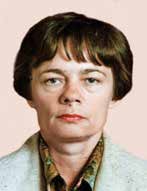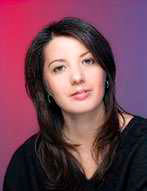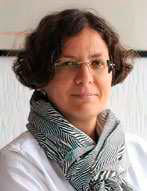Content

Abstract:
The article describes the method of abstract modelling of architectural plasticity. It includes the identification of its general compositional principles and artistic characteristics, united by the concepts of “natural” and “free” and correlated with the stylistic systems of modernism and postmodernism. The demonstration of how various electrical lighting techniques influence the architecture perception is also provided. The authors of this paper reveal peculiarities of the operation of lighting parameters and optical effects in relation to each type of model, including the interaction of external and internal spaces. They also formulate principles of creating dramaturgy and scenario of lighting solutions, and test methods of assessing the emotional perception of illuminated objects. The methodological material presented in this article provides the solution of such tasks as: the perception of architecture as an integral composition, acquaintance with the features of architectural plasticity of different times, the role of light in the perception of an architectural object, the evolution of the use of lighting techniques as a material for creating a work of art. It also describes how some masters work with electrical lighting and daylighting, as well what methods they use to create the dramaturgy of electrical light in experimental lighting solutions and to assess the emotional perception of objects under electrical lighting. The presented methodological approach allows the student to form a professional skill of working with lighting objects and spaces based on the formative properties of composition construction. This, in its turn, increases the quality of designing the architectural environment and reproducing its artistic features by means of electrical lighting.
References:
1. Poskrebysheva, O.O. The influence of light distribution on the emotional perception of interior space: Final qualifying work / St. Petersburg, ITMO University, 2019, 115 p. 2. Sokolova, M.A. et al. A look from the inside. Designing an architectural space: interior. Study guide / M.: BuksMArt, 2016, 176 p., ill. 3. Bystryantseva, N.V. An integrated approach to creating a light environment of an evening city: dissertation of the Candidate of Architecture / M., 2015, 152 p. 4. Sokolova, M.A. The natural type of shaping as the basis of the structure of the natural world, the concept of plastic culture and the educational task of architectural and design education// Architecture and Modern Information Technologies, 2011, # 1 (14). URL: https://marhi.ru/AMIT/2011/1kvart11/sokolova/sokolova.pdf (accessed: 08.10.2021). 5. Sokolova, M.A. Free or reflexive type of shaping in plastic culture and education of an architect-designer // Architecture and Modern Information Technologies, 2011, # 1 (14). URL: https://marhi.ru/AMIT/2011/1kvart11/sokolova/sokolova1.pdf (accessed: 08.10.2021). 6. Ermolaev, A.P. et al. Fundamentals of plastic culture: Textbook /A.P. Ermolaev, M.A. Sokolova, T.O. Shulika, ed. 2nd revised M.: Architecture-S, 2016, 416 p., ill. 7. Sokolova, M.A. Plastic propaedeutics in the training of an architect-designer: dissertation of the Candidate of Architecture / M., 2011, 282 p. 8. Jackson, P. Von der Idee zum Pop-up. Schneide- und Falttechniken im Papierdesign / Haupt Verlag, 2014, 128 p. 9. Sokolova, M., Silkina, M. Architectural lighting in search of identity: The environmental approach // SHS Web of Conferences. The 4th International Research-to-Practice Conference Lighting Design, 2017 (LD‑2017), St. Petersburg, Russia, October 12–13, 2017 (Lighting Design 2017), Vol. 43 (2018), 9 p. URL: https://doi.org/10.1051/shsconf/20184301013 (accessed: 30.03.2021). 10. Karpenko, V. Methodology for Light Design Training in the Sphere of Architectural Environment Design // Light & Engineering, 2020. Vol. 28, # 5, pp. 68–75. DOI 10.33383/2020–19. 11. Architectural Lighting: Designing with Light and Space / Hervé Descottes with Cecilia E. Ramos / New York: Princeton Architectural Press, 2011, 144 p. 12. Govan, M., Kim, C.Y., Turrell, J. A Retrospective. Los Angeles Country Museum of Art / Munich, London, New York: DelMonico Books. Prestel Verlag, 2013, 304 p. 13. Matveev, A.B. Principles of modelling in lighting engineering: Theses of Technical Sciences Candidate Dissertation, M., 1953, 12 p.
Keywords
- space
- artistic language of light
- emotional perception
- construction
- deconstruction
- design and plastic modelling
- abstract modelling
- electrical lighting
Recommended articles
Forcing Power Supply of a Xenon Flash Lamp to Create a High Power Irradiation Facility L&E, Vol.30, No.4, 2022
Methodology for Creating Personalized Adaptive Lighting Systems for Round-the-Clock Shift Workers L&E, Vol.31, No.5, 2023
Research into Luminance Characteristics of Objects with Architectural Lighting of Central Streets of Tula. L&E 27 (6) 2019



